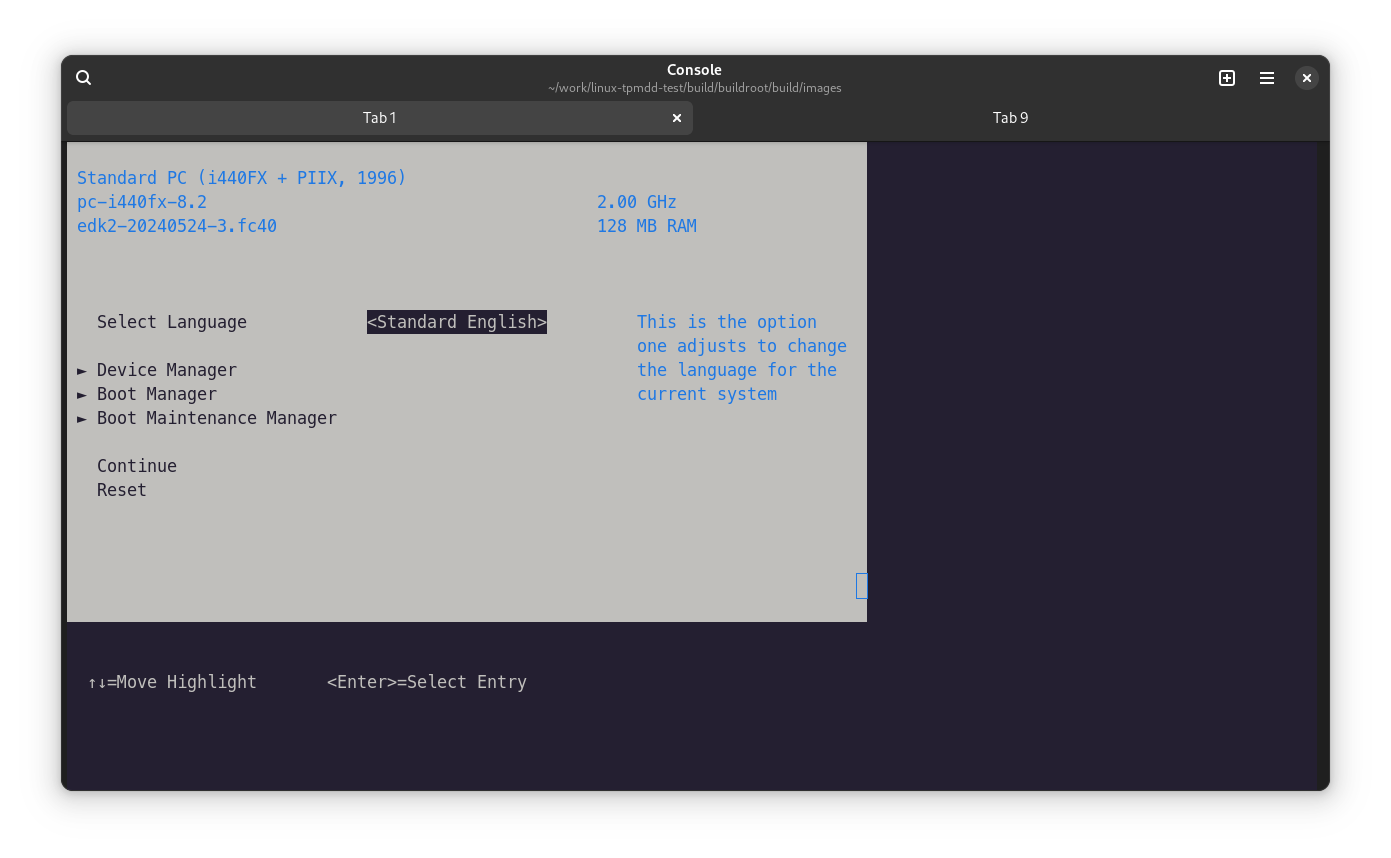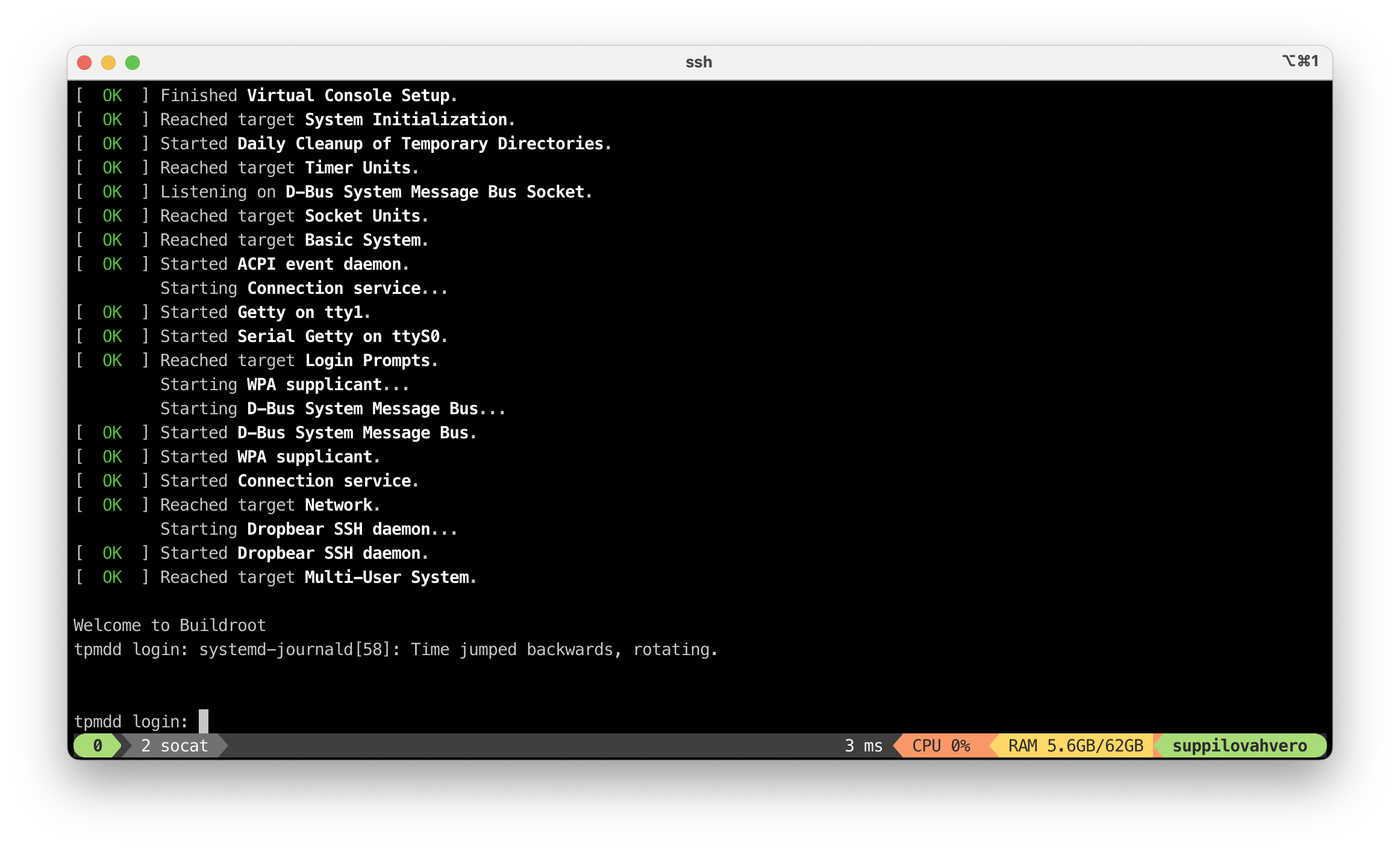Posts
4919Following
327Followers
491OpenPGP: 3AB05486C7752FE1
Jarkko Sakkinen
jarkkoBut dropping dependency from my build makes more sense.
BTW, grub-efi is just an EFI application so in that sense there is zero difference. It is more related to fatness of the stack.
And if you want just to boot a kernel without rootfs why you even would bother using systemd-boot? You can compile just as well EFI stub to the kernel image... So systemd-boot would be in such scenario useless cruft. Just rename bzImage as BOOTx64.efi and you're set. Linux *is* an EFI. application.
Anyway, I'll go with systemd-boot because I need to build less by doing that :-)
Jarkko Sakkinen
jarkkoRight this tells me everything:
$ fatcat efi-part.vfat -x tmp
Extracting /EFI/BOOT/BOOTX64.EFI to tmp/EFI/BOOT/BOOTX64.EFI
Extracting /bzImage to tmp/bzImage
I don’t know if there is any more modern tool for this but this is sometimes useful: https://github.com/Gregwar/fatcat
Jarkko Sakkinen
jarkkoUsing any formation of #Signal App, is it possible to get #SGX #attestation of contact discovery back to the client and view the certificate, or how does it benefit the end user?
Or is from client possible to get this attestation using the raw protocol that the app uses?
Jarkko Sakkinen
jarkkoActually not yet too successful booting my #BuildRoot image with systemd-boot. With grub-efi I got to the login.
EDIT: I think I got it and it is pretty obvious. I’m still deploying GRUB style configs when I construct the disk image with genimage, so I just fix them up as systemd boot style configs (found a reference for that).
So I just follow along [1] and cross my fingers ;-) I think it is good exercise to build from scratch a systemd image from boot to user space in all cases.
[1] https://www.freedesktop.org/wiki/Software/systemd/systemd-boot/
Jarkko Sakkinen
jarkkoThe summary of #systemd #spam of today:
- I got it fully working for my #BuildRoot image build.
- It boots with no errors.
- Compilation time is still not much different than with #Busybox.
- Uses now systemd-boot instead of GRUB (thanks @vathpela for comments).
- Uses systemd version 254. Plan is to get into phase.
- For BuildRoot, uses the master branch of: https://gitlab.com/jarkkojs/linux-tpmdd-test
I “systemd” re-initiated the history of my test repository: https://gitlab.com/jarkkojs/linux-tpmdd-test. From now on I commit on keeping a proper versions on this :-) It had no forks so far so I’m the only person who had consequences on that action.
Jarkko Sakkinen
jarkkoAlso it is a huge benefit that I now generate a single img file that QEMU can host or I can burn it to USB stick and run tests on real hardware. So I guess I'm a happy systemd user then...
Jarkko Sakkinen
jarkkoI have no idea what "systemd-stub" even is (first time I'm hearing the word), but I guess in my use using systemd-boot could decrease the turn-over time in compilation by decreasing dependencies. I compile full operating system image from scratch when I do kernel development, not just kernel image, so decreasing that is already a benefit.
Jarkko Sakkinen
jarkkoJarkko Sakkinen
jarkkoJarkko Sakkinen
jarkkoJarkko Sakkinen
jarkkoJarkko Sakkinen
jarkkoMy #systemd feature awareness is always about two years old because you don’t become aware of its features by doing #kernel development :-)
For instance, I had no idea that systemd already natively supported #TPM2 before month or two ago someone told me about systemd-cryptenroll. I had seen the utility tho in some article but had a blind spot for the prefix.
Now that I’ve seen systemd’s TPM2 implementation in source level I can only say that it is somewhat bloated but I guess it is working fine :-) It is bloated because it would have been better idea just directly use the device. So not a great implementation, but at least a working one. That said, it is not a major glitch but IMHO could be rewritten at some point, with the motivation of decreasing dependencies and compilation times.
In order to address the 1-2 year turn-over issue, I’ll try to get my #BuildRoot build to generate a fully working #systemd environment.
Jarkko Sakkinen
jarkkoHowever, it boots into emergency mode. Any tips or ideas?
My end product is 2GB img file that can be booted either with real hardware or in QEMU (it has #UEFI layout).
Jarkko Sakkinen
jarkkoIn Fedora installation I did not have sockets correctly configured so I wrote a script, and also in Fedora I had to first time create scdaemon.conf.
So I expect this to work better than before :-)
Maybe I should make this a contribution to PGP maintainers guide with more verbose explanations?
Especially the part which sockets need to be on would be good to be there because it is not easy to know beforehand the correct configuration e.g. if you've never used gpg-agent.
Jarkko Sakkinen
jarkkoAnd also here: https://gitlab.com/jarkkojs/skeleton/-/blob/main/.local/bin/linux-reset-gpg-agent?ref_type=heads
Maybe noteworthy in the script is that there are two sockets that need to be enabled:
- ssh-agent.socket
- ssh-agent-ssh.socket
I've sometimes forgot to enable latter.


